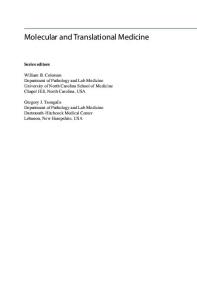Biofertilizers for Agricultural Sustainability: Current Status and Future Challenges
Due to the continuous rise in worldwide population and reduction in natural resources, various environmental and agricultural problems have been growing. To overcome this situation, there is a requirement of sustainable agriculture and environment. The in
- PDF / 11,733,040 Bytes
- 578 Pages / 439.42 x 683.15 pts Page_size
- 0 Downloads / 375 Views
Ajar Nath Yadav Joginder Singh Chhatarpal Singh Neelam Yadav Editors
Current Trends in Microbial Biotechnology for Sustainable Agriculture
Environmental and Microbial Biotechnology Series Editor Ram Prasad, Department of Botany, Mahatma Gandhi Central University, Motihari, Bihar, India
Innovative and novel advances in microbial biotechnology are providing great understandings in to the machineries of nature, presenting fascinating prospects to apply principles of biology to different arenas of science. Sustainable elucidations are emerging to address the concerns on improving crop productivity through microbes, depleting natural resources, environmental pollution, microbial degradation of pollutants, nanomaterials, nanotoxicity & safety issues, safety of food & agricultural products etc. Simultaneously, there is an increasing demand for natural bio-products of therapeutic and industrial significance (in the areas of healthcare, environmental remediation, microbial biotechnology). Growing awareness and an increased attention on environmental issues such as climate change, energy use, and loss of non-renewable resources have carried out a superior quality for research that provides potential solutions to these problems. Emerging microbiome approaches potentially can significantly increase agriculture productivity & human healthcare and henceforth can contribute to meet several sustainable development goals. The main objectives have provided an impetus for research on plants and microorganisms that produce novel bio-products with variable properties and understanding their mechanisms of action at cellular and molecular level. Hence, research activities of the environmental and microbial Biotechnology are comprehensively focused up on major sectors viz., bioresources, biorefining, bioremediation of organic and inorganic pollutants, environmental risk analysis of microorganisms, environmental assessment using microbiological indicators, enzymes for environment, food & industrial applications, nanomaterials & nanotoxicity, sustainable ecobiotechnology, biofertilizer, biocontrol agents for agriculture improvement and natural products for healthcare applications. This book series is a state-of-the-art for a wide range of scientists, researchers, students, policy makers and academician involve in understanding and implementing the knowledge on environmental and microbial biotechnology to develop biologics for proper health care to continue life in smooth and sustainable strategy without any adverse effect. More information about this series at http://www.springer.com/series/16324
Ajar Nath Yadav • Joginder Singh • Chhatarpal Singh • Neelam Yadav Editors
Current Trends in Microbial Biotechnology for Sustainable Agriculture
Editors Ajar Nath Yadav Department of Biotechnology Dr. Khem Singh Gill Akal College of Agriculture Eternal University, Baru Sahib Sirmour, Himachal Pradesh, India Chhatarpal Singh Department of Environmental Microbiology Babasaheb Ambedkar University Lucknow, Uttar Pradesh, India
Joginder Sin
Data Loading...











